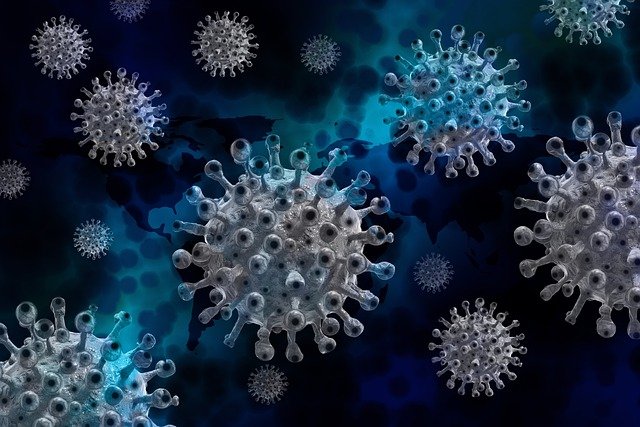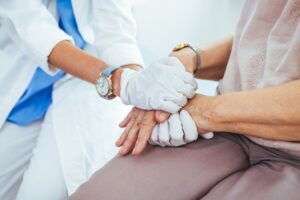ImmunityBio, a privately-held immunotherapy company, and NantKwest, a clinical-stage, natural killer cell-based therapeutics company, today announced they have administered their second-generation bivalent, human adenovirus (hAd5) Covid-19 vaccine candidate in a Phase 1 trial with no serious adverse events (SAE) reported in the low dose cohort, safety is ongoing for the high dose cohort.

ImmunityBio and NantKwest announce positive interim phase 1 safety data of hAd5 Covid-19 vaccine dose study. (Credit: Gerd Altmann from Pixabay)
Subscribe to our email newsletter
The trial, being conducted at Hoag Hospital in Newport Beach, California, enrolled 20 volunteers across two dose levels and the subject screening for the Phase I expansion cohort is ongoing.
Developed by ImmunityBio and manufactured by NantKwest, this second generation hAd5-vector vaccine is unique in targeting both spike (S) and nucleocapsid (N) SARS-CoV-2 proteins. The vaccine is designed to generate both antibodies and CD4+ and CD8+ T cell responses, all of which we believe are necessary for generating long-term immune memory. A recent study of responses of T cells from convalescent plasma collected from previously-infected SARS-CoV-2 patients demonstrated that the hAd5 vaccine could stimulate recall of SARS-CoV-2 specific CD4+ and CD8+ memory T cells from these patients to the S and N proteins delivered by the hAd5-COVID-19 vaccine. This finding of immune recall suggests that the hAd5 COVID-19 vaccine could potentially elicit cell-mediated immune responses in convalescent, previously infected patients to stimulate and boost memory T cells specific to SARS-CoV-2.
“We are grateful to the many volunteers who are participating in this important Phase 1 study of our COVID-19 vaccine candidate,” said Patrick Soon-Shiong, M.D., Chairman and CEO of ImmunityBio. “Given the urgent need for long-term protection from SARS-CoV-2 viruses and the alarming increase of infection in our country, we’re heartened by what we’ve observed so far and hope to be able to move quickly to a Phase 2/3 randomized, double-blind control trial, involving a larger group of volunteers including persons previously infected with SARS-CoV-2.”
The Phase 1, open-label, dose-ranging study is being conducted on 35 participants aged 18 to 55 years old (NCT04591717). The volunteers are divided into three groups, and each group receives different doses of the vaccine (5×1010 and 1×1011 viral particles). Participants receive two subcutaneous injections 21 days apart. The study’s primary objective is to examine the safety and reactogenicity of two doses of the vaccine. Additionally, immunogenicity, duration of immune response, and occurrence of symptomatic COVID-19 will be assessed.
Leveraging knowledge gained and using tools in-hand from ImmunityBio’s ongoing development of an adenovirus-based vaccine for the treatment of cancer (The NANT Cancer Vaccine), the company has developed a unique second-generation COVID-19 vaccine. This vaccine is distinctive in multiple aspects of design from the current COVID-19 vaccines in late-stage clinical trials, including:
the adenovirus vector platform (E2b-deleted region within hAd5)
the immunogenic SARS-CoV-2 protein antigens selected (S & N)
the potential for antibody and T cell immune response enhanced by molecular trafficking of the SARS-CoV-2 N protein to lysosomal intracellular compartments
the potential to provide multiple routes of administration (subcutaneous, intranasal and oral) to potentially achieve mucosal, antibody, and long-term cell mediated immunity
the possibility to overcome cold-chain limitations with refrigerated (-20 °C and 2-8 °C) and room temperature-stable vaccines
Under the terms of a definitive agreement announced on August 24, 2020, ImmunityBio, Inc. and its affiliate NantKwest, Inc. (NASDAQ: NK) agreed to share equally the costs of development, manufacturing, marketing, and commercialization of the products each is developing related to COVID-19, including the hAd5 vaccine candidate.
Should a product be commercialized successfully, the companies have agreed to a 60-40 percentage split of net profits, with the larger share going to the company that developed the product. The agreement also details the structure of shared governance of the joint collaboration.
Source: Company Press Release
 Advertise With UsAdvertise on our extensive network of industry websites and newsletters.
Advertise With UsAdvertise on our extensive network of industry websites and newsletters.
 Get the PBR newsletterSign up to our free email to get all the latest PBR
news.
Get the PBR newsletterSign up to our free email to get all the latest PBR
news.

